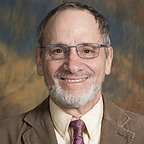Mendel Letters 66 — Machu Picchu
February 26, 2022
Dear Mendel,
I’m in my seventies now and there are some things you never forget. Machu Picchu is one of them.
Today it is a one hour plus flight from Lima, Peru to the old Inca capital of Cuzco, altitude over 11,000 feet in the Andes Mountains, and then take a antique train to Aguas Calientes, a 3 and a half hour trip along the Urubamba River into the Sacred Valley. Once you get to Aguas Calientes buses take you to the mountain top Machu Picchu ruins, about a thirty minute ride. There are also modern roads so you can drive from Lima to Cuzco in about 20 hours.
When we made the trip in 1969 there were no airlines or modern roads. It was a two-day trip on antiquated school buses loaded with people and animals on dangerous single lane mountain roads. The drivers worked in shifts. There was one overnight stop where for a few hours we shared beds. We bought food from native women stationed along the roads and a drink that was fermented corn that they fermented by spitting into the brew. At markets we bought coca leaves to chew and settle our stomachs and deal with the altitude. Native people chewed the leaves to suppress hunger. From Cuzco we took the same antique train to Machu Picchu but we had to climb up the steep hillside to enter the ruins. In 1983 Machu Picchu was made a UNESCO World Heritage site and today tourists are capped at 2,500 per day. When we went there we were the only visitors and we camped in the ruins for three nights.
Cuzco was the capital of Inca Empire destroyed by Spanish conquistadors in the 16th century. The name Cuzco comes from the Inca word for ‘navel” or center because it was the hub of a mountain empire that stretched from northern Ecuador to central Chile, over 1,500 miles. At the time of the Spanish conquest, the empire probably had a population of over 12 million people and Cuzco was a metropolis of 200,000. The Inca were master builders and using stone tools and without mortar they constructed massive walls that still surround Cuzco and the mountain top city of Machu Picchu.
We arrived in Cuzco before sunrise and it was freezing. No stores were open so we headed to the Cathedral Basilica of the Assumption of the Virgin on the Plaza de Armas where we warmed our hands over candles and a priest gave us hot beverages. The cathedral dates to the early 17th century. The most spectacular remnant of the Inca Empire in Cuzco is Sacsayhuamán, a fortification on the hills north of the city. Cuzco also had a large open-air market where we refilled supplies, especially coca leaves, before heading to Machu Picchu.
Machu Picchu is 8,000 feet above sea-level, so it is lower than Cuzco and we had less trouble breathing and climbing. It is a stone city on a mountain top hidden by native people from the Europeans for hundreds of years and not “discovered” by a Norte Americano from Yale University until the early 20th century. Because of its isolation, high altitude, being hidden, it is remarkably well preserved. It is surrounded by terraces for agricultural and rainwater is guided threw channels carved into stone streets. There is continuing debate over the reason for the city’s isolation. One theory is that it was a sanctuary for holy virgin priestesses to protect them from the invading Spaniards. Another theory is that it was a palace built for the Inca emperor Pachacuti Inca Yupanqui who governed the empire in the second half of the 15th century.
At Machu Picchu I think I overdid the coca leaves. We made a tea that essentially anesthetized my stomach, so when I ate I got horrible cramps.
High above Machu Picchu looms another mountain, Huayna Picchu. There is lengthy, precipitous stairway carved into the cliff face and a trail that leads to the peak. It was so scary that we climbed it with our backs to the cliff wall. We had to climb it. It was there.
Your son
Hard copies of these typed letters were discovered in an old camp trunk in the basement storage facility of one of the few buildings that remain standing in this Brooklyn neighborhood. The building is quite decrepit and is scheduled for demolition. The letters were found in November 2048 by a teenager who believes they were written by his great-grandfather. The letters are addressed to Mendel, the letter writer’s father, who appears to have been dead for at least six years when his son, whose name we are unsure of, started to write him. The son appears very agitated in some of the letters. With permission from the family, we are publishing them on the date they were written, only 28 years later.
Follow Alan Singer on twitter at https://twitter.com/AlanJSinger1
